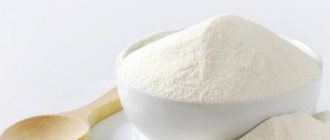Having signed up for sports training, every person faces the question of a beautiful, healthy body. This result can be achieved only after a year of hard training. Beginners need to create an exercise program so that their muscles are not immediately weakened, but for those who have been involved in sports for a long time, the program needs to be improved each time so that the body does not weaken.
People with curvy figures should create a program that will gradually remove fatty deposits from the body. Most often, these are the kind of exercises that are simple morning exercises for a normal person: running, stretching the body, and more.
In addition to training, it is clear that nutrition plays an important role in a person’s life. Creating a menu is a complex and time-consuming process, but if you understand it carefully, you will achieve good results. For normal functioning of the body, it is necessary to create a diet in which the ratio of proteins, fats and carbohydrates (BJC) would provide the body with energy for sports. The correct ratio will allow you to lose weight, put your body in order and improve the functioning of the body as a whole.
Why do you need to know BZHU
First, a few words especially for those who plan to gain muscle mass, but already have excess body weight due to fat deposits. The common myth that fat can be converted to muscle has no scientific basis. That is why training must be combined with a diet that will express a calorie deficit. And only after losing weight will it be possible to move on to strength training and a different diet. How much BJU do you need to gain muscle mass? It all depends on the age, height, weight and gender of the athlete. For example, a man with an average build needs 3150 calories, of which:
- 150 g protein;
- 375 g carbohydrates;
- 115 g fat.
The result of such increased nutrition in combination with regular exercise will certainly be rapid muscle growth.
Carbohydrate to Fat Ratio for Different Body Types
All people are different.
It is unlikely that you will find two people who undergo the same process of muscle growth. The above methods are a great start. For most people, they can actually provide real benefits. However, there are still some people who may need to slightly adjust the amounts due to differences in body type, genetic background and differences in metabolic processes. Ectomorphs, as a rule, have a very fast metabolism. Such people need a large intake of calories. The body of such people must cope with an excess of calories daily (approximately 600-700), while they do not gain fat. Ectomorphs should get extra calories from carbohydrates.
https://www.youtube.com/watch?v=upload
In contrast, there are endomorphs - people with excess fat. If you belong to this body type, then it is better for you not to start with consuming carbohydrates. Consume approximately 1 g of fat per 1 kg of weight, and also increase the amount of protein you take by 10 percent, and then calculate the required amount of carbohydrates.
However, the undoubted advantage is that over time the body will adapt and begin to use carbohydrates more rationally: their action will be aimed at growth and recovery, and not at their deposition as fat.
Basics of proper nutrition for gaining muscle mass
To achieve the desired result and acquire a beautiful, sculpted body, you need to remember the BJU ratio. It would be nice not to forget about the calorie content: the energy value of the product depends on this indicator. True, there are a number of dishes that help saturate the body with the necessary energy for a long time and at the same time have a very low calorie content. These include protein shakes. Herbalife Nutrition has developed Formula 1 specifically for those who are watching their body weight. Depending on the chosen diet, the cocktail will help you lose, gain or maintain weight.** The point is its composition: the high content of plant protein provides the body with the necessary protein, which is the main building material of cells. For those losing weight, a cocktail helps you feel full and not remember hunger for a long time; for those who have chosen a diet for weight gain, speed up the process of building sculpted muscles.
How to learn to correctly count BZHU?
If you are a beginner and find it difficult to calculate the percentage of BJU in food, then you can use pre-prepared menus. Such dishes contain a balanced amount of proteins, fats, carbohydrates, as well as vitamins and other important elements. Menus compiled by professionals are suitable for both those losing weight and ordinary people who watch their diet. This method will make your life easier, save you from hated calculations and reduce precious time. It is these services that our company General Food provides. Eat healthy and tasty!
Conclusion
Thus, maintaining a balanced diet is a labor-intensive process; it requires devoting a lot of time to yourself. But it will become easy if you use the services of professionals. General Food rations will prepare and deliver kbju food. You shouldn’t put proper nutrition on the backburner, as this can play a cruel joke on anyone. Overeating will lead to obesity, and undereating will lead to nutritional exhaustion. Learn to control your desires and eat right.
Calories
Even the best sports shake is not capable of producing significant results if all the energy is spent on training. In order for muscles to grow, the body must take in more calories than it loses. To gain muscle mass, you need to calculate the required number of kilocalories. This can be done using simple formulas or convenient calculators. To the resulting number you will need to add from 10 to 20% (depending on the initial data). The result of the calculations will be the number of calories that need to be consumed during the day for muscle growth. The main thing is not to forget about training and a rational approach.
It is important! The optimal methods of preparing food for gaining muscle mass are stewing, steaming, baking and boiling. Fried, grilled or deep-fried foods are considered unhealthy.
How much to eat to gain weight: why sometimes the weight doesn’t grow
https://www.youtube.com/watch?v=ytcreatorsru
Sometimes, despite properly selected nutrition, weight gain does not occur. It's possible:
- In case of incorrect training, when the physical activity does not correspond to the assigned tasks.
- In the absence of a sufficient recovery period between workouts necessary for proper sleep and rest.
- If you have to be nervous a lot. Excessive emotions cause increased production of cortisol and adrenaline, which prevent weight gain and destroy muscles.
- Nutrition chart for gaining muscle mass
- Pre-workout protein for muscle gain
- Gaining muscle mass for men training program
- The best creatine – which one to choose? Monohydrate for gaining muscle mass!
Squirrels
The main building material for muscle growth is protein food. When engaging in strength sports and training aimed at gaining muscle mass, protein intake should be kept at 2–2.5 grams per kilogram of body weight. However, it is recommended to start with a smaller amount and observe the results. If muscle growth is slow, the protein content in the diet can be increased. Traditional foods for an athlete's diet are:
- chicken breast;
- fish;
- beef;
- cottage cheese;
- egg whites;
- beans;
- buckwheat;
- chickpeas
It's also easy to get your daily protein intake from protein shakes. Herbalife Nutrition suggests including Formula 1 in your diet. More than a dozen different flavors and a convenient method of preparation are an ideal choice for those who are looking for a way to correctly calculate the nutritional value and consume the required amount of protein.
Qualitative composition of food[edit | edit code]
Source: “Basics of individual and collective nutrition for athletes”
.
Author:
professor, doctor of medical sciences, S.A.
Polievsky Publishing house.
: Physical education and sports, 2005
Caloric intake standards characterize only its quantitative composition. The completeness of nutrition largely depends on the quality composition of food, which gives an idea of the content in it in sufficient quantities of individual nutrients necessary to perform plastic and regulatory functions, satisfy taste demands, a feeling of satiety, etc.
Ratio of proteins, fats and carbohydrates
In this case, not only the absolute content of each nutrient is important, but also the quantitative relationships between them, which determines the so-called nutritional balance. It must be remembered that a deficiency or excess of certain substances can negatively affect the most important functions of the body, despite the nutritional value of food in caloric terms.
At the same time, knowing the nutritional value and purpose of individual nutrients, it is possible, through the preparation of diets of varying quality, to actively influence the functional activity of the body, promote the development of skeletal muscles, eliminate excess fat deposits, and increase performance and endurance.
Daily calorie content
The most favorable ratio of basic nutrients (proteins, fats and carbohydrates) for adults is 1:1:4 - this is the so-called balanced nutrition formula. For athletes, this formula looks different: 1:0.8:4 or even 1:0.7:4. This is due to the fact that when performing sports exercises, oxygen starvation often occurs. The oxidation of fats requires more oxygen than the oxidation of carbohydrates; under conditions of lack of oxygen, when fat is used as an energy source, under-oxidized products are formed - ketones, which are toxic to the body.
When conducting training and competitions in mid-altitude conditions, it is especially important to reduce the proportion of fats in the diet due to increased hypoxia - the ratio should be 1:0.7:4 or 1:0.6:4.
Requirements for essential nutrients can be calculated by taking into account the percentage of calories that each nutrient provides of the total caloric intake of the diet. According to the formula for a balanced diet, the percentage of proteins, fats, carbohydrates should be as follows: 14%: 30%: 56%.
This formula is suitable for swimming, sailing and motorsports. For sports where significant absolute and relative values of oxygen debt are observed, it is more correct to use the formula -15%: 24%: 61% or 1:0.7:4.
Based on these formulas, the energy value of each food product is calculated, and then the content of basic nutrients in the diet is calculated using energy coefficients. So, for example, with a calorie diet of 3000 kcal, the share of proteins according to the 1st formula is 420 kcal, the share of fats is 900 kcal, and the share of carbohydrates is 1680 kcal. Knowing the energy coefficients of the main nutrients during their oxidation in the body (1 g protein - 3.8 kcal; 1 g fat - 9.3 kcal; 1 g carbohydrates - 4.1 kcal), we can calculate the content of these nutrients in grams . In this case, the amount of protein will be 111 g, fat - 97 g, carbohydrates - 410 g.
With an increase in energy expenditure, the need for energy and, accordingly, for basic nutrients increases. However, it must be taken into account that an excessive increase in protein in the diet can have an adverse effect on the human body. In this regard, the share of protein in the caloric supply of the diet should be slightly reduced; namely: with a calorie diet of 4500-5500 kcal - up to 13%; 5500-6500 kcal—up to 12%; 6500-8000 kcal - up to 11%.
Fats
Your diet must contain beneficial omega-3 amino acids. They help the body cope with the stress of overload, prevent tissue injury and help recover after training. In addition, polyunsaturated fatty acids are necessary for normal functioning of the brain and cardiovascular system. There should be at least 1–2 grams of such healthy fats per kilogram of body weight in your daily diet. At the same time, you will have to completely abandon butter, mayonnaise and other sauces, as well as fast food. Sources of valuable omega are:
- avocado,
- nuts,
- vegetable oils,
- fish fat.
By the way, it is the latter that contains a record dose of omega-3 acids. You can get the required amount of amino acids every day using Herbalifeline Max*. Additionally, the product contains essential oils of thyme and mint, which refresh the taste of the product.
Carbohydrates
This is the main source of energy for the human body. Some athletes try to reduce their carbohydrate intake or completely eliminate them from their diet, but this is an extremely wrong approach. In order to gain muscle mass, normally the largest percentage will fall on this component. You need to consume 4–6 grams of carbohydrates per 1 kilogram of your own weight.
It is important! Carbohydrates perform a variety of vital functions for the body. The main one is providing cells with energy through the synthesis of glucose. The brain largely depends on this substance. He needs at least 100 g of glucose per day.
That is why, with a carbohydrate deficiency, fatigue, apathy, mood swings and drowsiness are observed. If you want to achieve quick results in the gym, you cannot give up this important component of the BJU balance for gaining weight.
Carbohydrate cycle
Alternating days of consuming more or less carbohydrates is called a carbohydrate cycle. This technique is a very effective way to build muscle mass without gaining excess weight.
Many carbohydrate cycling diets are quite complex. It can be very difficult to calculate the required amount. However, this is not necessary. You can do the following. On training days, increase your carbohydrate intake by 20 percent and slightly reduce your fat intake to keep your total calories the same. On non-training days, reduce carbohydrates by 20 percent and increase fat.
Making the right diet
You need to understand that numbers and calculations are the starting point; Herbalife Nutrition consultants will help you determine more accurate indicators, who will help you conduct a wellness test and create your individual balanced nutrition plan. It is important that the diet always contains a sufficient amount of vegetables, fruits and grains, fermented milk and meat products in combination with Herbalife Nutrition products. For example, Herbalife Nutrition protein shakes can be consumed as a complete meal (for those who want to lose weight) or added to the main diet (for those who plan to build muscles). The company's assortment includes drinks with various flavors. Calculating BJU is a great way to figure out exactly what your regular menu should look like. But this is far from the main factor influencing the effectiveness of strength training.











